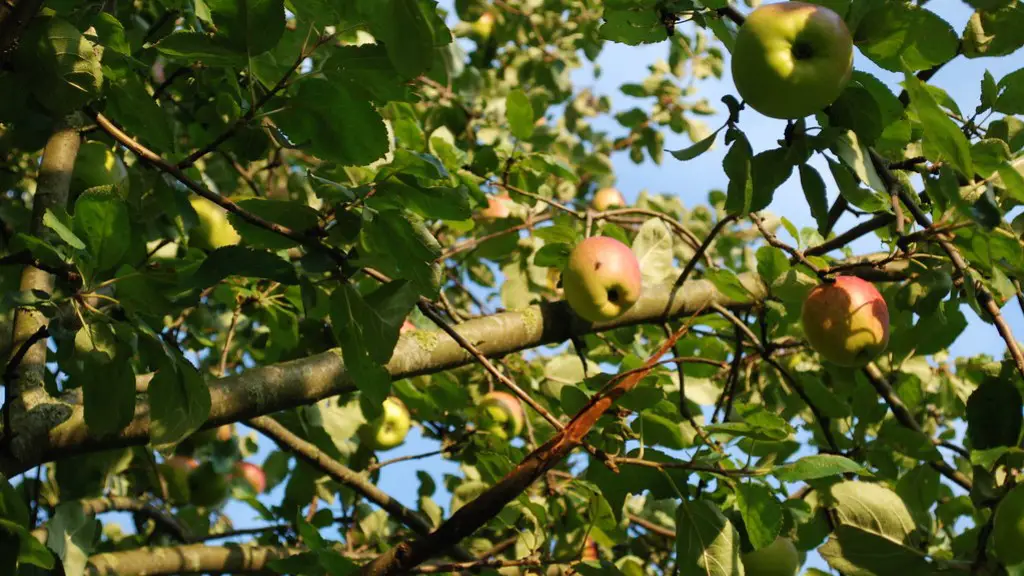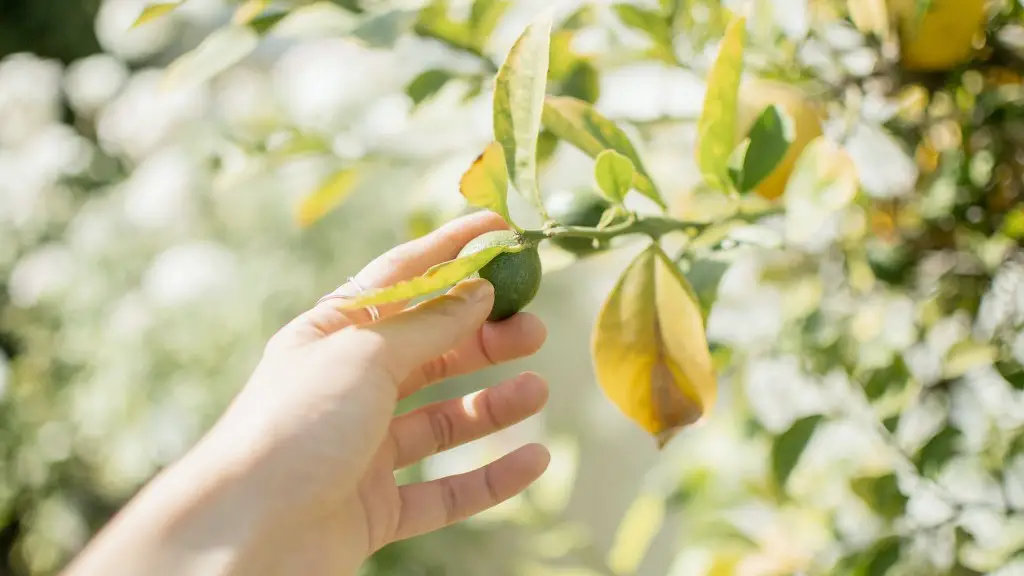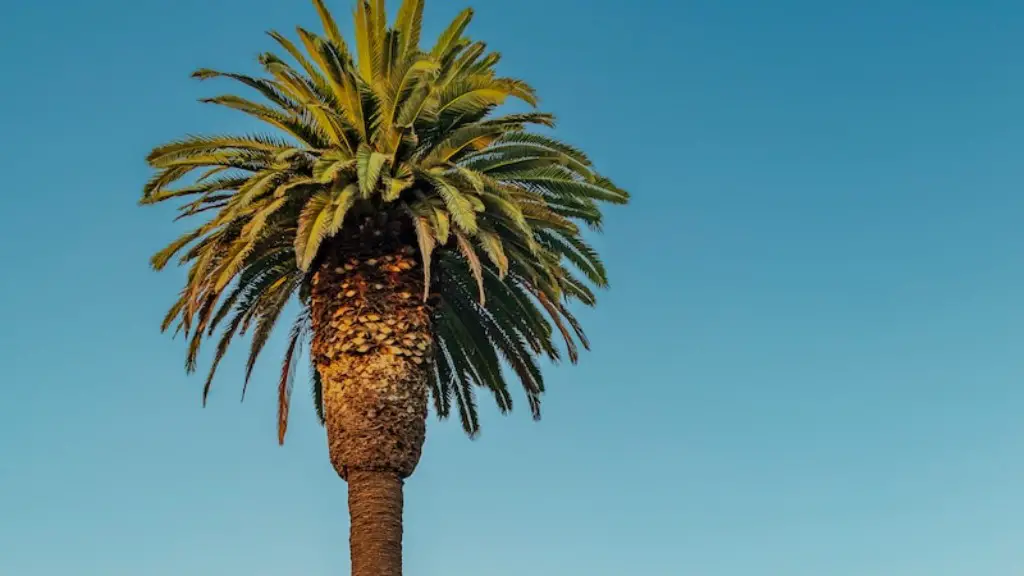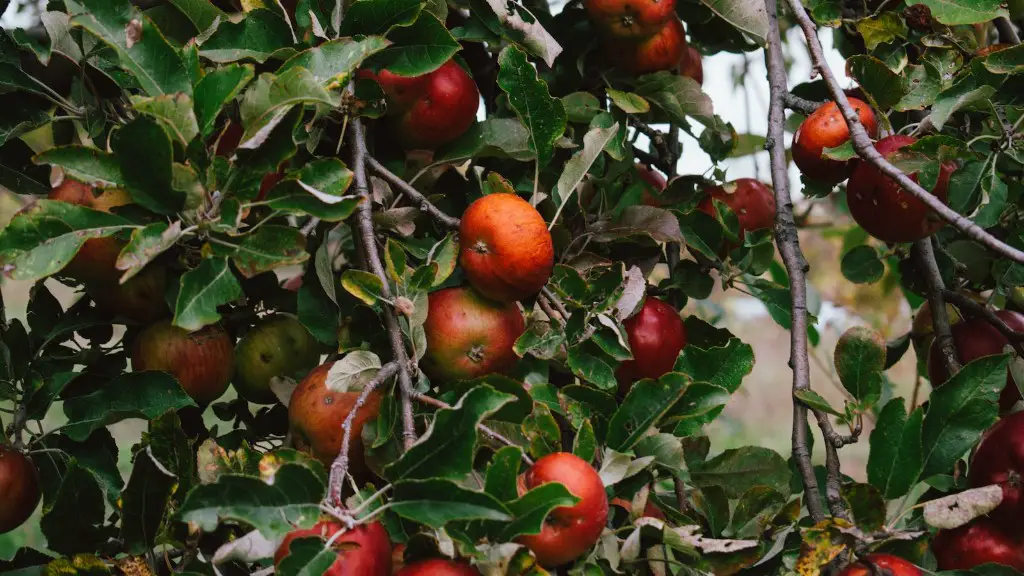Can You Grow a Dwarf Apple Tree in a Pot?
Growing a dwarf apple tree in a pot can be a great way to enjoy the benefits of a fruit bearing tree, without needing to free up a large area of ground. This is because dwarf apple trees are typically 1/4 to 1/3 of the size of a regular apple tree. With the right soil and environment, you can successfully cultivate a dwarf apple tree in a pot.
First, select an appropriate pot. Remember that while dwarf apple trees don’t take up much space, they can still become heavy so pick a pot that is both large enough to accommodate the root system and able to handle the weight of the tree. The size of the pot will depend on the size of your tree, but typically the pot should be at least 18” in diameter and depth.
You’ll want to make sure soil in the pot is well-draining and mainly consists of organic matter. Use a soil-based potting mix and ensure that the pot has holes at the bottom for proper drainage. If you don’t have access to soil-based potting mix, you can mix up a homemade potting mix of equal parts sand and compost. Along with the soil, add some fertilizer to the mix for an extra boost of nutrients.
Make sure to give the tree enough sunlight. This can be tricky when growing a tree indoors, but with the right placement, you can ensure that your tree gets the sun it needs. Aim for the tree to receive direct sunlight for at least 5 hours a day. You may also want to rotate the pot every week so that all parts of the tree are getting equal amounts of sunshine.
Watering your tree is also important. Because dwarf apple tree grow in a pot, they’re more susceptible to drying out, so make sure to check the soil of the pot daily. If the top inch of the soil is dry, water the tree deeply until the water drains from the bottom of the pot. Too little or too much water can both lead to problems, so getting this balance right is key.
Lastly, be sure to prune the tree properly to keep it looking healthy and keep it manageable. Pruning will help keep the tree small and will encourage fruit production. When pruning, aim to remove any crossing or dead branches that could lead to overcrowding or disease. Remove any branches that are growing straight up and select strong branches near the center of the tree that you want to keep.
Why Plant a Dwarf Apple Tree in a Pot?
Growing a dwarf apple tree in a pot is great option for those who don’t have the space for a full-sized tree or those who want to cultivate a tree in their home. Since dwarf apple trees are smaller than regular apple trees, they are not as demanding when it comes to soil and space.
Along with being easier to manage, dwarf trees tend to be more abundant when it comes to harvest time. Since their root systems aren’t as large as regular trees, dwarf trees are better able to absorb the nutrients they need from a smaller space. This allows for a higher concentration of nutrient and leads to a bigger and better harvest.
Moreover, having a dwarf apple tree in a pot gives you more flexibility when it comes to positioning. By keeping your tree in a pot, you can easily move it if needed to better maximize sunlight or avoid frost. You can also move your tree indoors during cold weather, saving you the effort of having to wrap or insulate it against the cold.
A dwarf apple tree can also be a great way to get small children excited about gardening. Due to its small size and manageable requirements, it can be an accessible and rewarding project that can teach kids the intricacies of gardening. Plus, when the fruits become ready to pick, it can be a fun activity for the whole family.
Are There Any Drawbacks to Planting a Dwarf Apple Tree in a Pot?
Despite the many benefits of planting a dwarf apple tree in a pot, there are some drawbacks. Since the root system is confined to the pot, the tree won’t be able to absorb as many nutrients as it could in an open garden. This can an lead to poor fruit production and poor overall development of the tree.
Additionally, because the root systems are confined, your tree will be far more susceptible to drying out. If you don’t maintain proper watering and drainage, your tree can quickly suffer from root rot. You’ll also need to check the soil at the bottom of the pot and make sure it’s not compacting, as this can affect the tree’s growth.
Pests can also be a concern when growing a dwarf apple tree in a pot. Since the tree is in a suspended environment and won’t have the same protections as a tree in an orchard, you’ll have to be proactive and inspect it for pests frequently. Treatments for pests also tend to be more difficult when applied to a tree in a pot, as the soil is far more susceptible to damage.
You’ll also need to consider the weight of the tree. As the tree matures and its fruit grows, the pot can become quite heavy. You should try to find the largest and heaviest pot you can if you plan on keeping the tree in a pot for a long period.
What Are the Best Dwarf Apple Trees to Grow in a Pot?
When it comes to choosing a dwarf apple tree, there are a few varieties that are easier to grow in a pot. Gala, Red Delicious, and Granny Smith apples are the best choices for growing in a pot, as they are smaller in size and don’t require as much space as other varieties.
Fuji and Honeycrisp apples are also popular choices for pot growing as they are smaller in size and require less frequent watering. Keep in mind, however, that these varieties may need to be rotated more often to ensure that all parts of the tree get the light they need.
Finally, it’s important to remember that not all apple trees will be suitable for pot growing. Avoid trees that require large areas of space, such as McIntosh or Golden Delicious, as they simply won’t fit in a pot. Also, avoid any trees that are known to be overly vigorous as they may outgrow the pot in a short amount of time.
How to Care for a Dwarf Apple Tree in a Pot?
Caring for a dwarf apple tree in a pot can be relatively easy once you get the basics down. The most important thing to remember is to keep the pot well-mulched at all times. Doing so will help the tree conserve water and won’t let the soil become easily compacted.
You should also keep your eye out for pests. Fruit-bearing trees tend to be more susceptible to pests, so check your tree regularly and treat it if needed. As soon as you notice any infestation, apply the proper treatment as quickly as possible to prevent it from spreading.
Finally, as the tree matures, its root system will start running out of space. When that happens, you’ll need to repot your tree into a larger pot. When repotting, make sure to use a sandy, well-draining soil mix and take care to loosen the soil around the root system before putting it in the new pot.
What Should I Avoid When Planting a Dwarf Apple Tree in a Pot?
When planting a dwarf apple tree in a pot, there are several things you should avoid. The most important thing is to not over-water your tree. Too much water can lead to root rot and can also cause the tree to become weak and easily toppled. Whenever possible, water only when the top inch of soil has become dry.
Make sure to avoid putting the pot in direct sunlight for too long. As mentioned above, dwarf apple trees don’t require much sunlight, so avoid long periods in direct sunlight to prevent the tree from becoming heat-stressed and to prevent leaf-scorch from forming.
Lastly, don’t forget to prune your tree regularly. Pruning your tree will not only help eliminate any dead or overcrowded branches, but it will also help encourage fruit production. Remember to prune when the tree is dormant and to never prune too aggressively, as this can cause stress to the tree.




